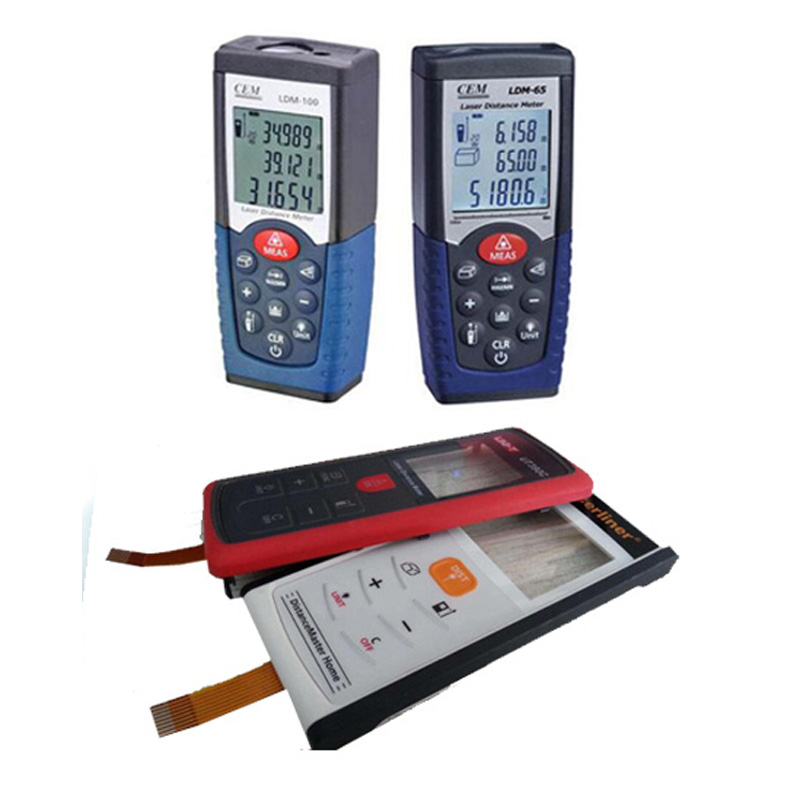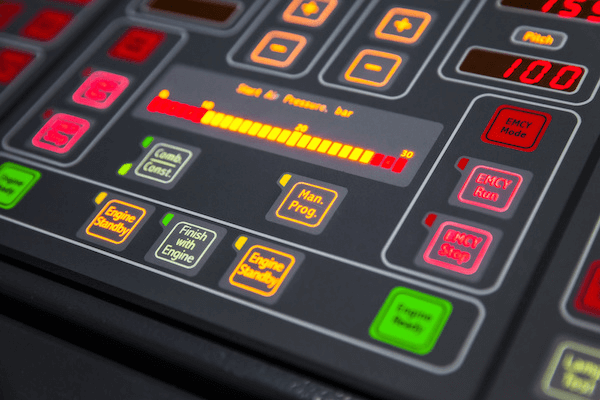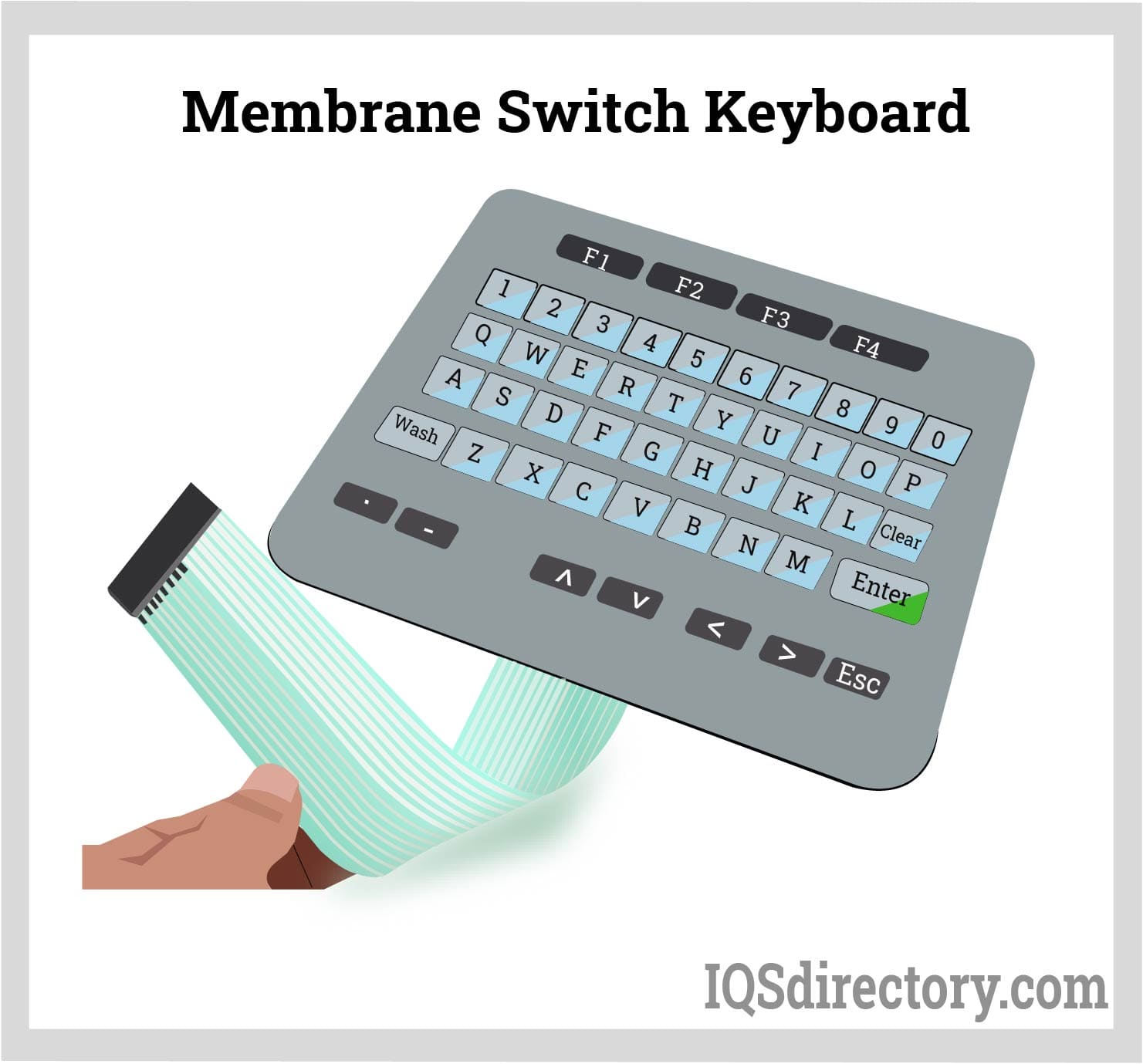The Production Refine Behind Membrane Switch: What You Need to Know
The production process behind membrane layer switches over combines mindful design, material option, and quality assurance. It starts with comprehending the intricacies of membrane layer switch style and proceeds through various stages, including material selections and printing strategies. Each phase plays a necessary function in making certain capability and toughness. The complexities of layer building and the strenuous screening standards may disclose insights that are not right away evident. What lies beyond these foundational components?
Recognizing Membrane Layer Switch Over Design
Membrane layer buttons may appear basic at very first look, their style includes detailed considerations that assure functionality and resilience. The style process starts with a thorough understanding of user needs, including the user interface's desired application and environmental factors. Comfort designs is a crucial element, as the design needs to facilitate ease of use while making sure that tactile comments fulfills user expectations.Moreover, the layering of elements, such as visuals overlays, sticky layers, and conductive traces, must be precisely engineered. membrane switch. This split arrangement not just influences the switch's responsiveness yet additionally influences its longevity. Focus is provided to the sealing methods used to protect against wetness and dust, which might jeopardize efficiency. In addition, design considerations extend to aesthetic appeals, where color pattern and visual clarity boost individual experience. Ultimately, the layout of membrane changes balances performance, user experience, and resilience, making certain that they satisfy the demands of numerous applications effectively
Products Used in Membrane Layer Switch Over Manufacturing
When picking products for membrane layer switch production, it is important to contemplate both efficiency and longevity. The key products consist of polyester and polycarbonate movies, which give versatility and toughness. These films are typically coated with sticky to assure proper bonding to substrates. Conductive inks, generally composed of silver or carbon, are important for developing electric connections within the switch, enabling trusted operation.Additionally, a protective layer, such as a hard layer, is regularly put on boost scratch resistance and durability. The option of backing material, such as acrylic or foam, can significantly impact the switch's tactile feeling and general individual experience. Numerous ecological factors, including temperature and moisture, must direct product selection to guarantee peak efficiency in particular applications. Ultimately, the right mix of materials adds to the membrane layer switch's functionality and life expectancy, making informed choices important for suppliers.
The Printing Refine: Creating Graphics and Text
The printing process in membrane switch manufacturing plays a substantial role in producing high-quality graphics and text. Numerous visuals design strategies are utilized to guarantee visual appeal and performance, while careful ink selection techniques are necessary for resilience and efficiency. Understanding these components is essential for attaining best lead to membrane switch style.
Graphic Style Techniques
Graphic design techniques play a crucial duty in the printing procedure of membrane layer buttons, as they define exactly how graphics and message will eventually show up on the last item. Efficient graphic design involves the calculated use formats, shades, and fonts to boost readability and aesthetic charm. Designers often make use of vector graphics for scalability, guaranteeing that images remain sharp at numerous sizes. Additionally, focus to comparison and alignment is crucial, as it affects individual communication and aesthetic top quality. The incorporation of branding elements, such as logo designs, need to be taken care of with care to preserve brand name honesty. On the whole, thoughtful visuals design techniques contribute substantially to the capability and beauty of membrane buttons, influencing user experience and product performance.
Ink Choice Techniques
Choosing the appropriate ink is vital for achieving the wanted aesthetic top quality and resilience in membrane button production. Various ink kinds are made use of, consisting of solvent-based, water-based, and UV-curable inks. Each kind offers distinct features, such as flexibility, attachment, and resistance to environmental variables. Solvent-based inks are often preferred for their toughness and vivid shades, while water-based inks are extra eco friendly however might have restrictions in bond. UV-curable inks supply rapid curing and robust performance. Additionally, shade matching techniques ensure that the picked inks align with design specifications. Inevitably, the option of ink need to think about elements such as application technique, substratum compatibility, and end-use needs to achieve exceptional results in membrane layer switch graphics and text.
Layer Building and Assembly

Product Choice Refine
A mindful option of materials is essential in the production procedure of membrane switches, as it directly affects capability and durability. The key products made use of consist of polyester, polycarbonate, and various conductive inks. Polyester is usually favored for its exceptional resistance to chemicals and abrasion, making it suitable for rough environments. Polycarbonate, on the other hand, supplies premium clarity and impact resistance, which is useful for applications requiring exposure and effectiveness. Conductive inks, typically composed of silver or carbon, are crucial for producing reputable electrical paths. Additionally, the selection of glue materials impacts the general stability of the switch - membrane switch. Examining variables such as ecological direct exposure, tactile comments, and visual requirements guides producers in picking the finest materials for their particular applications
Layer Adhesion Methods
Adhering layers in membrane button building and construction is an important process that assures functionality and longevity. Various attachment techniques are utilized to safeguard perfect bonding in between layers, which usually consist of making use of adhesives, warm, and pressure. Pressure-sensitive adhesives (PSAs) are commonly used for their convenience of application and prompt bonding abilities. In addition, thermal bonding techniques can be used, where warm is made use of to turn on glue residential properties, safeguarding a strong bond. The option of adhesion approach largely depends on the products involved and the details application needs of the membrane button. Proper placement and uniform application of adhesives are important to avoid defects, safeguarding the switch operates properly throughout its desired life-span.
Quality Assurance Procedures
Guaranteeing quality control throughout the layer construction and setting up of membrane switches is important for maintaining efficiency and reliability. This process usually entails numerous important steps, consisting of detailed inspections at each phase of production. Producers make use of advanced testing approaches, such as peel tests and adhesion assessments, to verify the integrity of layer bonds. Additionally, visual evaluations are performed to recognize any kind of issues in printing or product incongruities. Ecological problems, such as temperature level and moisture, are meticulously kept an eye on to guarantee excellent healing and attachment. In addition, normal calibration of equipment helps preserve precise production criteria. By applying these top quality control procedures, my blog manufacturers can significantly reduce the risk of item failing, assuring that the last membrane layer changes satisfy the needed requirements and customer expectations.
Examining and High Quality Control Procedures

Technologies in Membrane Switch Innovation
As advancements in technology remain to progress, membrane switches are taking advantage of cutting-edge growths that improve their capability and individual experience. One remarkable development is the integration of capacitive touch technology, which allows for more instinctive and receptive user interfaces. This change not only enhances aesthetics but likewise reduces mechanical wear and tear, prolonging the lifespan of the switches.Additionally, innovations in visuals overlay materials have actually led to boosted resilience and resistance to environmental factors such as moisture and UV light. These materials now supply boosted clarity and brightness, further elevating the visual appeal.Furthermore, the incorporation of clever modern technology is changing membrane layer switches over into interactive control board, allowing connection with IoT tools. This connection promotes a seamless user experience, paving the means for applications in numerous markets, from health care to consumer electronics. Jointly, these developments setting membrane layer changes as crucial components in modern-day device design.
Often Asked Concerns
The length of time Does the Membrane Layer Switch Manufacturing Refine Take?
The period of the membrane button production process can vary substantially. Variables such as complexity, products utilized, and manufacturing quantity impact timelines, with typical production varying from a few days to a number of weeks for completion.
What Are the Usual Applications for Membrane Layer Switches?
Membrane buttons are frequently made use of in different sectors, including automotive controls, house appliances, medical gadgets, and customer electronic devices (membrane switch). Their flexibility and durability make them optimal for applications needing straightforward user interfaces and trustworthy efficiency in diverse settings
Can Membrane Layer Switches Be Personalized for Particular Requirements?

What Is the Life expectancy of a Regular Membrane Layer Switch?
The life-span of a regular membrane layer switch varies, yet usually, it varies from 1 to 5 million cycles. Aspects such as use, setting, and material high quality substantially affect sturdiness and overall performance over time.

Are Membrane Layer Switches Over Ecologically Friendly?
The ecological friendliness of membrane layer switches over varies. Some products used might not be recyclable, while others can be eco-friendly. The general impact depends on manufacturing products and techniques, requiring cautious factor to consider during choice and disposal. The manufacturing procedure behind membrane layer switches over combines mindful layout, material selection, and quality control. It starts with comprehending the ins and outs of my latest blog post membrane button design and advances with various phases, consisting of material choices and printing techniques. When choosing products for membrane switch production, it is necessary to ponder both efficiency and longevity. A cautious choice of products is crucial in the manufacturing process of membrane buttons, as it straight influences capability and toughness. The selection of adhesion approach mainly depends on the products entailed and the certain application demands of the membrane button.